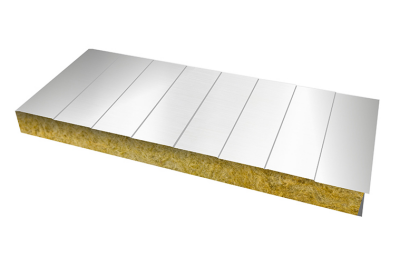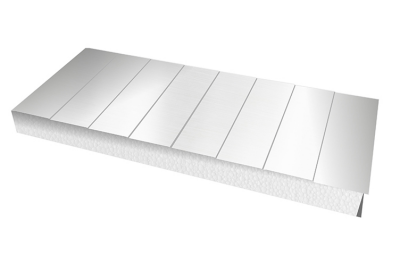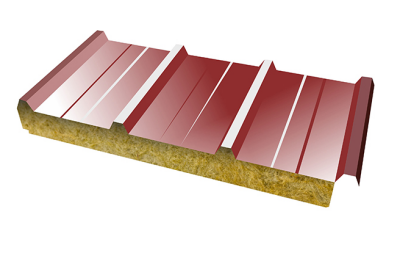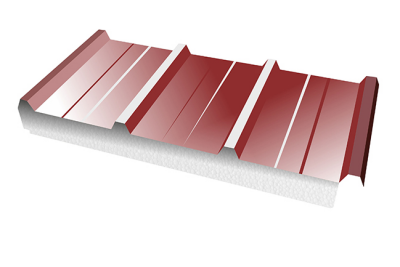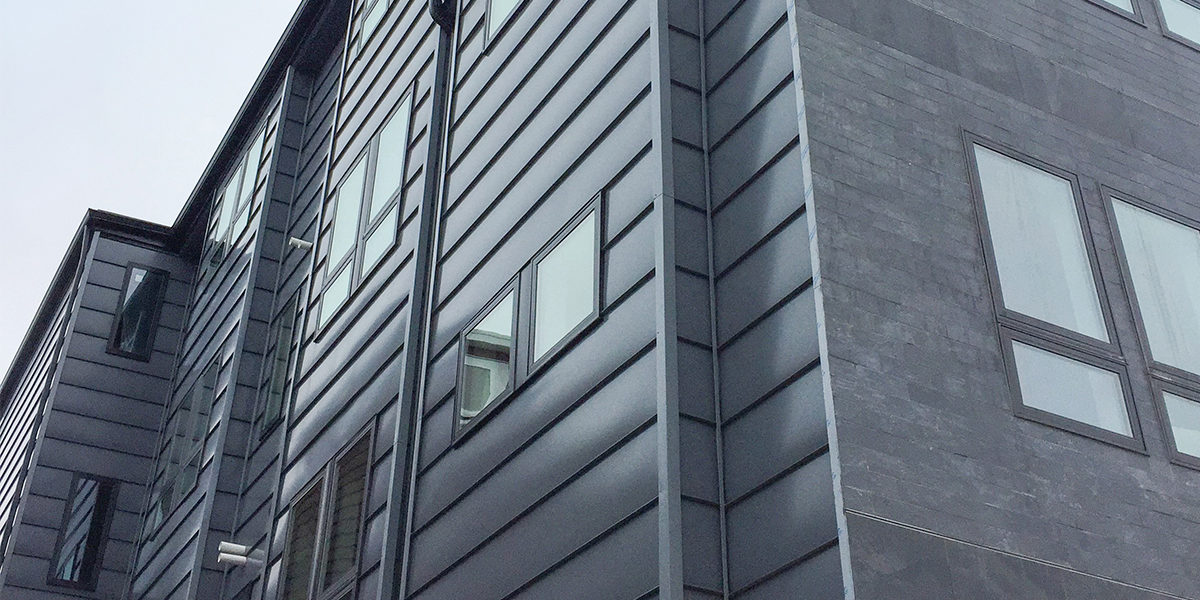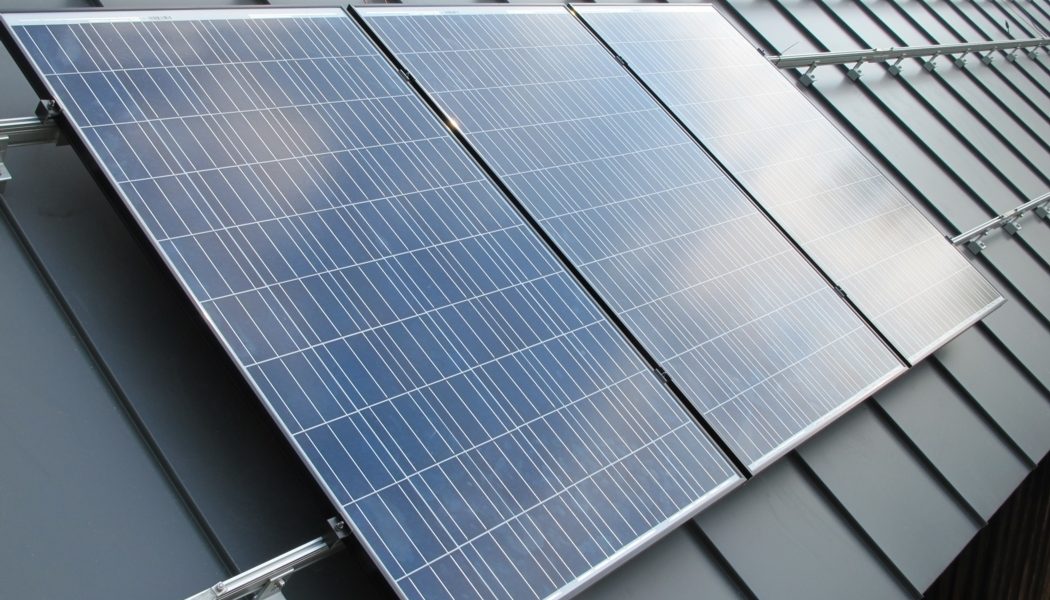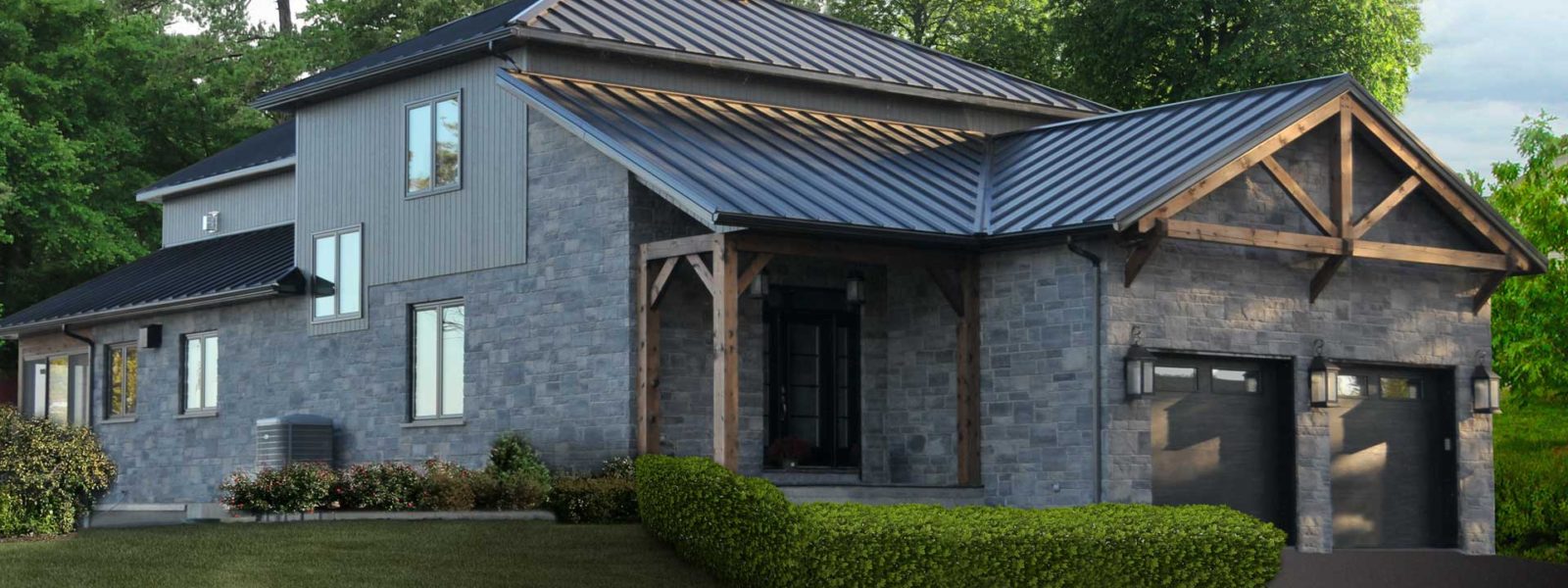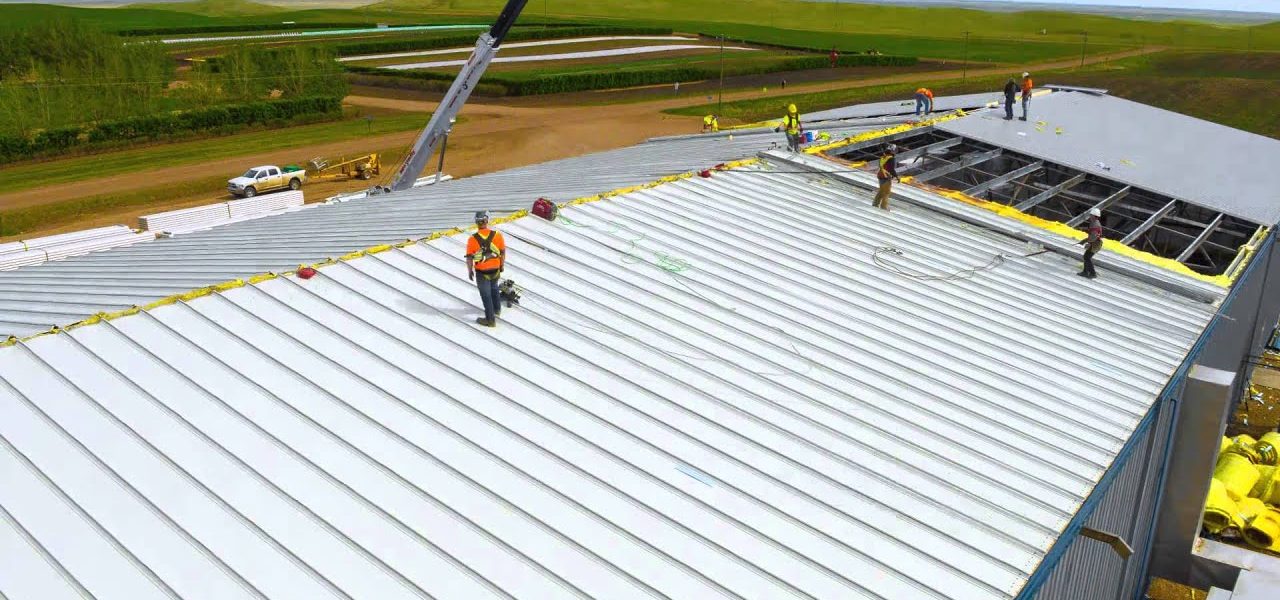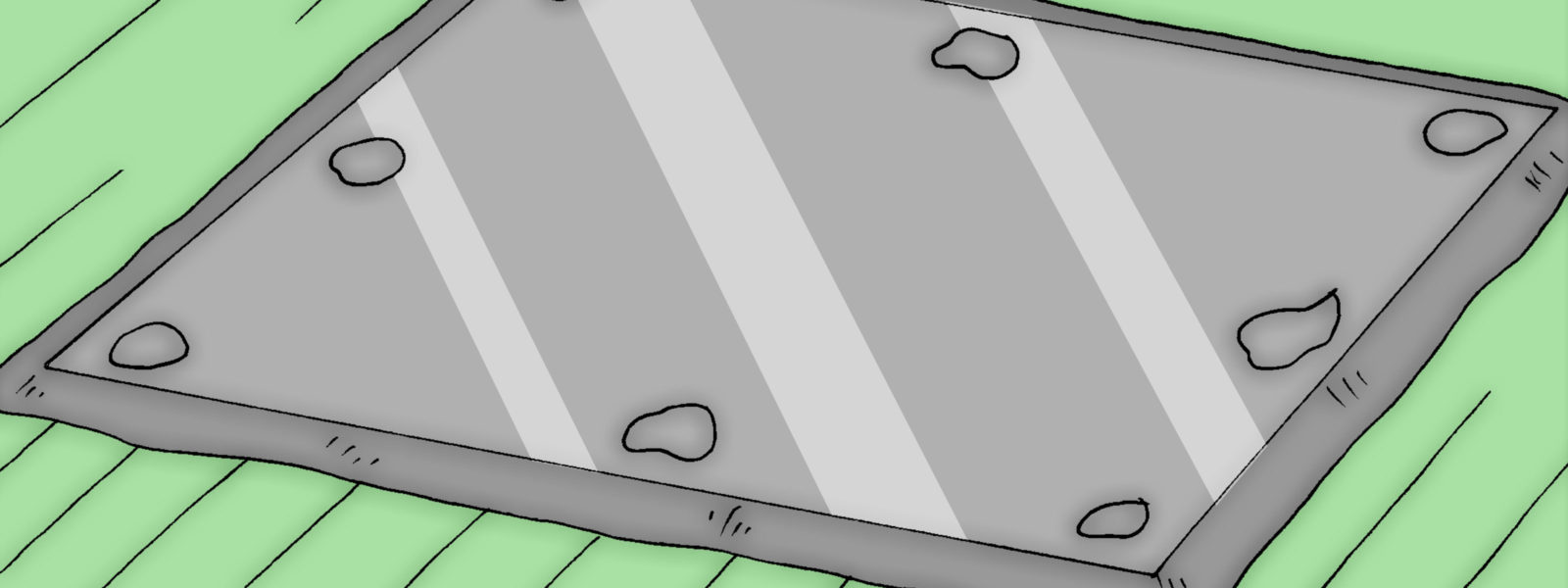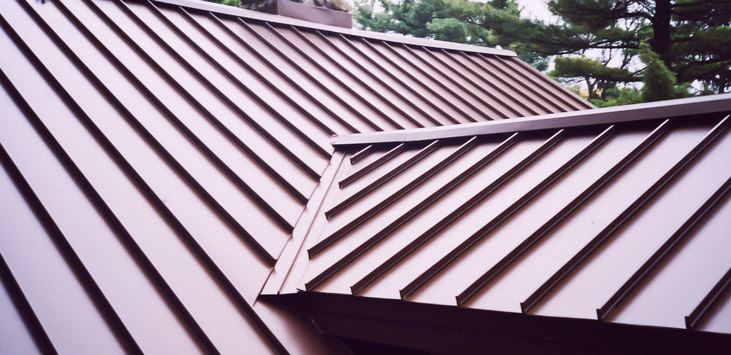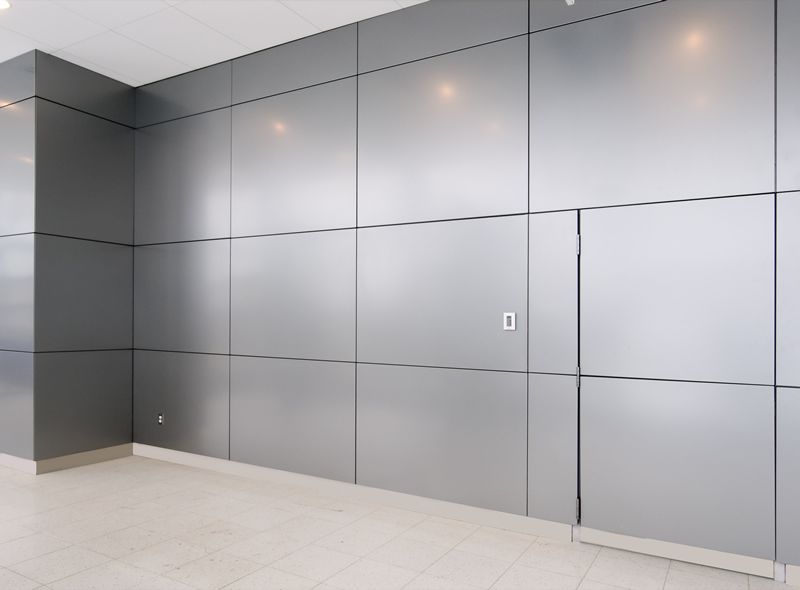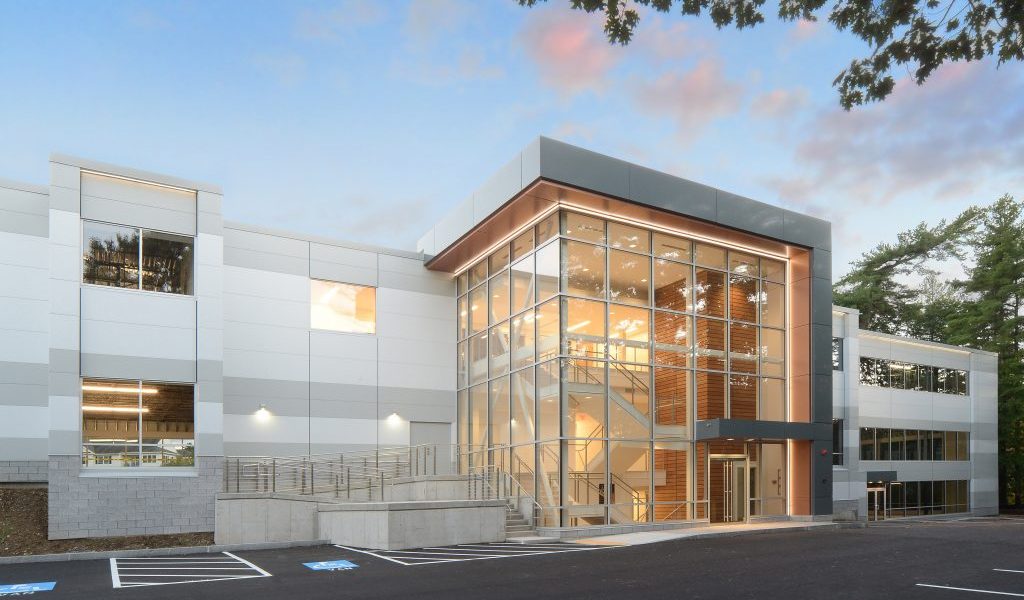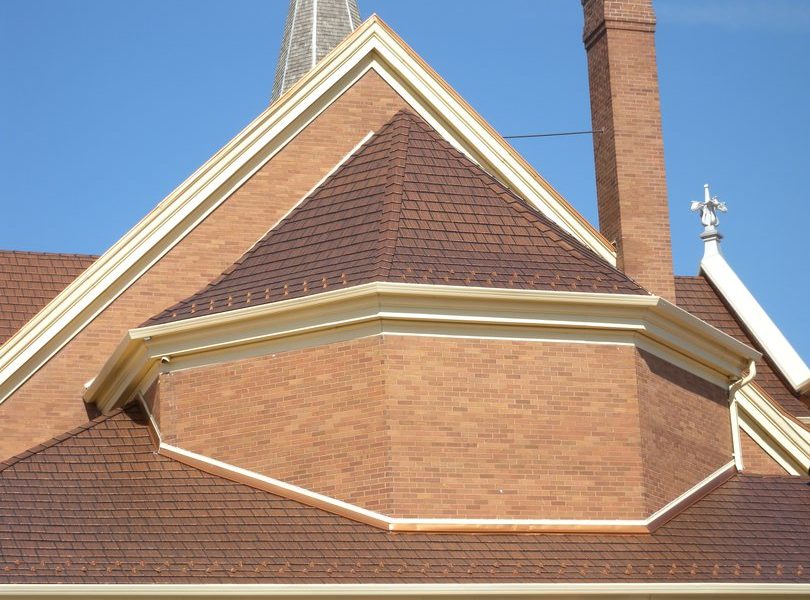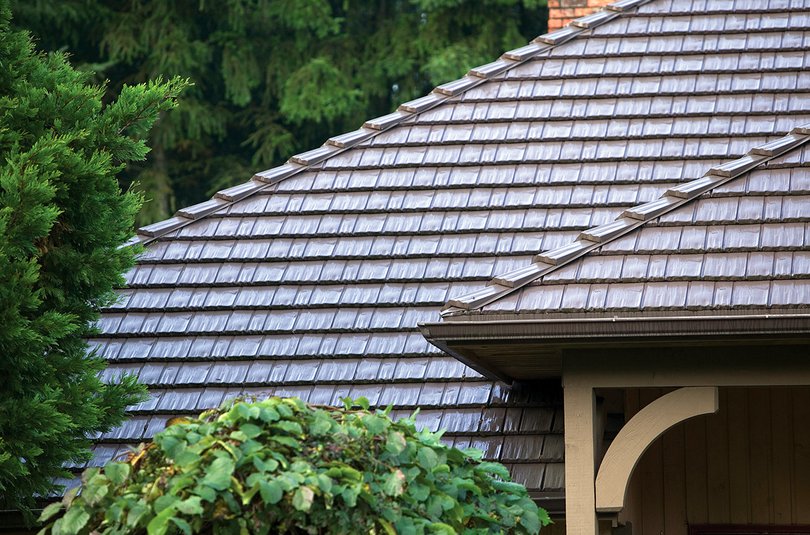Thanks to their many benefits, metal wall panels have seen a huge surge in popularity over recent years. Knowing what these panels are, the various types available to you, and how they are used can help you decide if metal panels are right for you.
What Are Metal Wall Panels Made Of?
One of the more popular metals used in commercial construction is steel, but wall panels can be made from a variety of materials, including: Aluminum, Copper, Stainless Steel or Steel, Titanium, and Zinc. Each material comes with it’s own pros and cons. For example, copper fares well in areas with high exposure to saltwater.
What Are The Specific Types Of Metal Wall Panels?
- Single Skin Metal Panels:
- Single skin metal panels are a single interlocking layer of metal that has been roll formed or preformed into the desired profile. Single Skin Panels offer quicker installation than other metal panel systems, and can be insulated as well. However, since they are less rigid than other types of metal wall panels, they are still very susceptible to damage, especially at ground level.
- Metal Composite Material (MCM) Metal Panels:
- MCM panels are formed by bonding two metal skins to a core. The end product is a metal/plastic composite with greater benefits than just using a solid metal panel of the same thickness. They are more balanced than other panels, and retain their shape even after installation. MCMs are also versatile, with the ability to be curved in different shapes and used on multiple types of buildings.
- Insulated Metal Panels (IMPs):
- As the name suggests, this metal wall panel is made with an insulating foam center that is surrounded by two aluminum or steel panels. IMPs tight seal makes them an excellent choice for climate-controlled facilities. Like other panels, IMPs come in numerous colors, widths, and finishes while also providing superior energy-efficient insulation.
We hope that this gives you a better idea how metal wall panels are used, why they might be a better option to use in certain situations, and which type might best suit your needs. If you have any questions, feel free to contact our qualified team for answers. We can be reached at 519-451-7663 or info@ecoinsulatedpanels.com.

